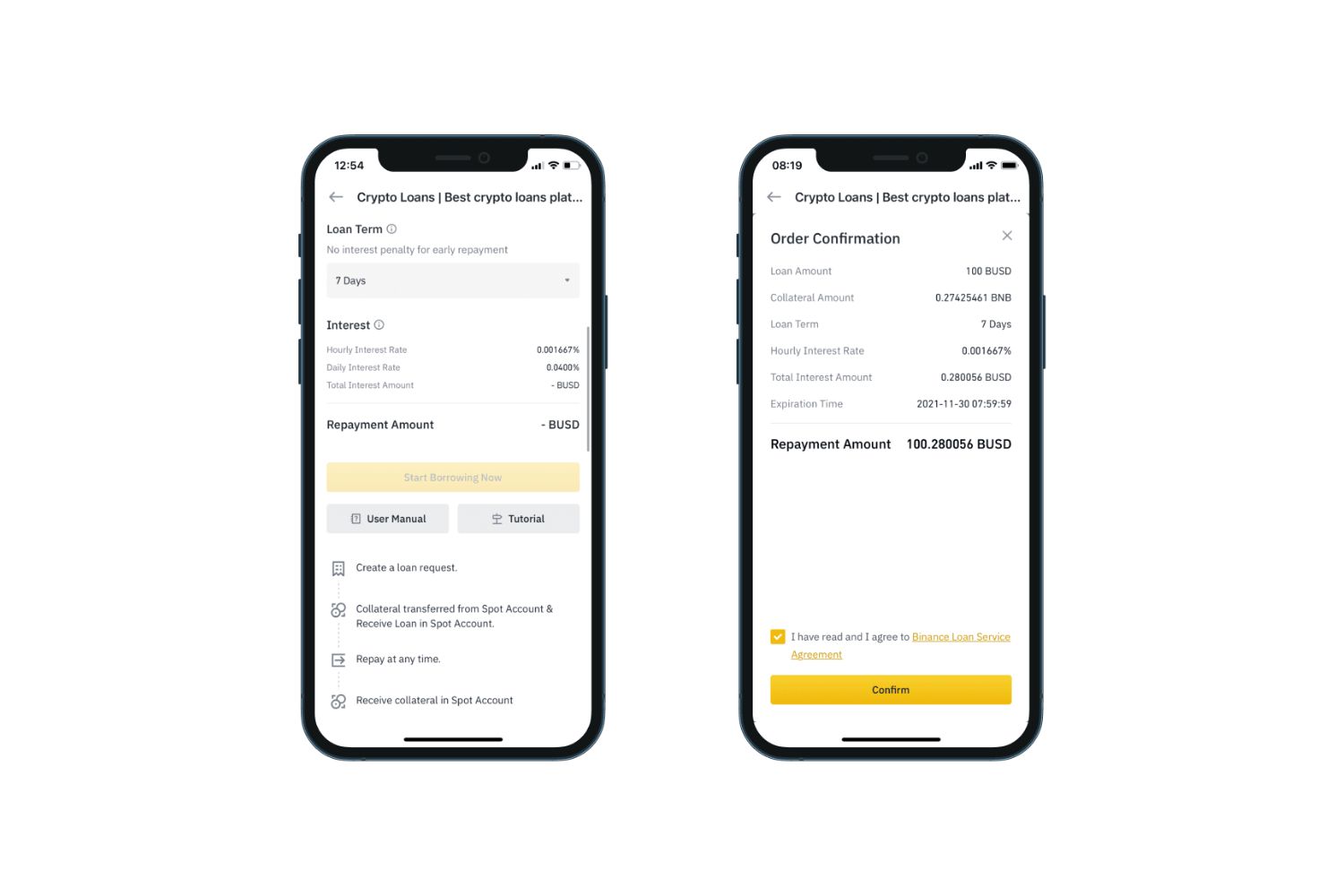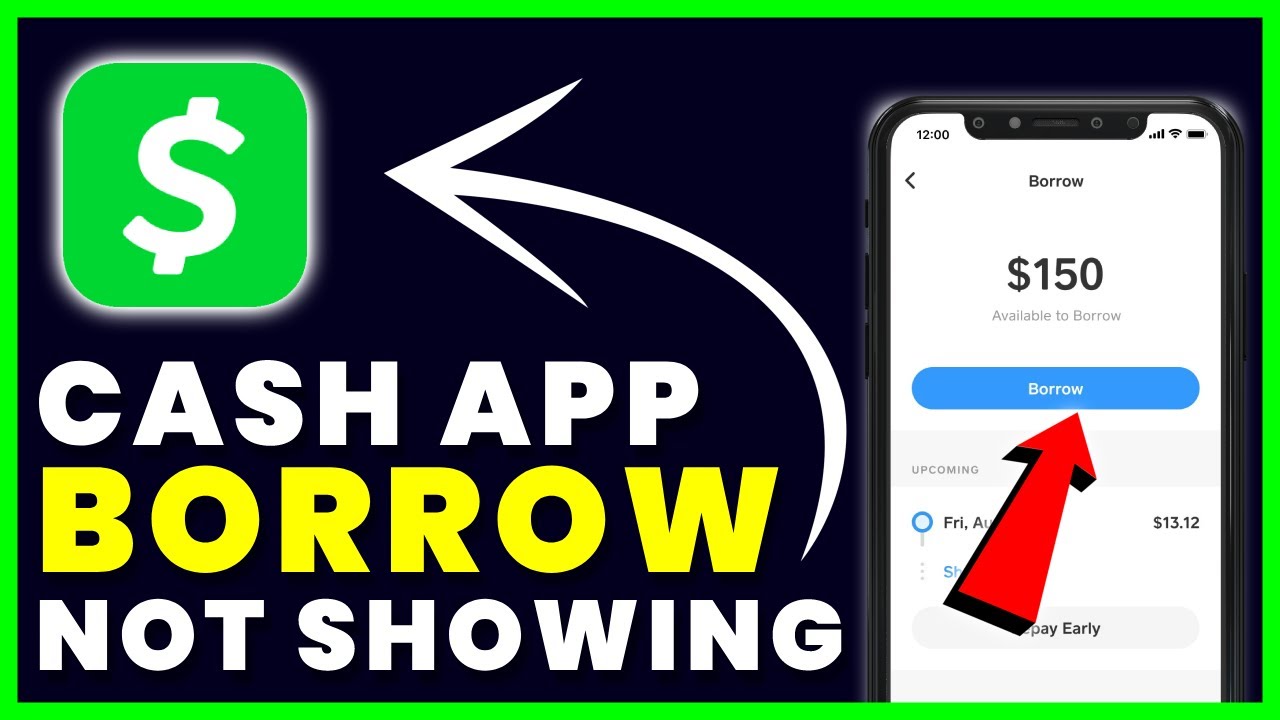Introduction
Welcome to the world of Bitcoin borrowing! Whether you’re looking to invest in other cryptocurrencies, fund a business venture, or simply need some extra cash, borrowing Bitcoin can be a great option. With the increasing popularity and value of Bitcoin, there is a growing community of lenders willing to lend their digital assets.
In this comprehensive guide, we will walk you through the step-by-step process of borrowing Bitcoin. From finding a trusted lender to repaying the loan, we will cover all the essential aspects you need to know. So, if you’re ready to dive into the world of Bitcoin borrowing, let’s get started!
Before we begin, it’s important to note that borrowing Bitcoin comes with its own risks and responsibilities. It’s crucial to have a clear understanding of the terms and conditions of the loan, as well as a plan for repayment. Additionally, it’s recommended to only borrow from reputable lenders to ensure a secure and trustworthy borrowing experience.
In the following sections, we will discuss how to find a Bitcoin lender, set up a Bitcoin wallet, create a borrowing proposal, negotiate loan terms, accept the loan agreement, repay the loan, and build trust with lenders.
While borrowing Bitcoin can offer many advantages, it’s essential to approach it with caution and make informed decisions. By following the guidelines and tips provided in this guide, you’ll be well-equipped to navigate the world of Bitcoin borrowing and make the most of this exciting opportunity.
Part 1: Finding a Bitcoin Lender
When it comes to borrowing Bitcoin, finding a reliable and trustworthy lender is of utmost importance. Here are some steps to help you find the right lender:
- Research reputable lending platforms: Start by researching reputable lending platforms that connect borrowers and lenders in the Bitcoin community. Look for platforms with a track record of successful transactions and positive user reviews.
- Consider peer-to-peer lending: Peer-to-peer lending platforms allow borrowers to connect directly with lenders, eliminating the need for intermediaries. This can often result in lower fees and more flexible borrowing terms.
- Join Bitcoin communities: Engage with Bitcoin communities such as forums, social media groups, and online communities. These platforms are a great way to connect with experienced Bitcoin lenders and get valuable recommendations.
- Check lender profiles and reviews: Before finalizing a lender, thoroughly review their profile and read reviews from other borrowers who have worked with them. Look for lenders with a good reputation, prompt responses, and fair terms.
- Verify lender credibility: It’s essential to verify the credibility of the lender before proceeding with the borrowing process. Check if they have a strong online presence, a verifiable contact address, and a history of successful lending transactions.
Remember, finding a reliable Bitcoin lender is crucial to ensure a safe borrowing experience. Take the time to do your research, read reviews, and ask for recommendations from the Bitcoin community. By choosing the right lender, you can have peace of mind throughout your borrowing journey.
Now that you have a clear understanding of how to find a Bitcoin lender, let’s move on to the next step: setting up a Bitcoin wallet.
Part 2: Setting Up a Bitcoin Wallet
Before you can borrow Bitcoin, you’ll need to set up a Bitcoin wallet to securely store the borrowed funds. Here’s how you can go about it:
- Choose the right type of wallet: There are several types of Bitcoin wallets available, including hardware wallets, software wallets, and online wallets. Each has its own advantages and security features. Take the time to research and choose the type that best suits your needs.
- Download a Bitcoin wallet app: If you opt for a software or online wallet, visit your device’s app store or the official website of the wallet provider and download the app. Ensure that you are downloading from a legitimate and trusted source.
- Follow the installation instructions: Once the app is downloaded, follow the installation instructions provided. This typically involves creating a new wallet by setting a strong password and securing a recovery phrase or seed. Keep this information safe as it will be essential for accessing and recovering your wallet.
- Generate a receiving address: After setting up the wallet, you will be provided with a unique receiving address. This address is what you will share with your lender to receive the borrowed Bitcoin. It’s important to note that each transaction requires a new receiving address to enhance security.
- Backup your wallet: To protect against the risk of losing your Bitcoin, it’s crucial to regularly backup your wallet. Most wallet apps provide a feature to easily backup your wallet data, either through a cloud service or by saving a copy on an external storage device.
Setting up a Bitcoin wallet is a fundamental step in borrowing and managing your Bitcoin funds. Take the time to understand the different wallet options available and choose one that provides the right balance between security and ease of use.
Now that you have set up your Bitcoin wallet, it’s time to move on to the next step: creating a borrowing proposal.
Part 3: Creating a Borrowing Proposal
Once you have found a reliable lender and set up your Bitcoin wallet, it’s time to create a borrowing proposal. A well-crafted proposal will help lenders understand your needs and increase your chances of securing a loan. Here’s how you can create an effective borrowing proposal:
- Specify the loan amount: Begin by clearly stating the amount of Bitcoin you wish to borrow. Be realistic in your request and consider how much you can comfortably repay within the agreed-upon terms.
- Outline the purpose of the loan: Explain why you need the borrowed funds. Whether it’s for personal expenses, investment opportunities, or business development, be transparent and provide a compelling reason for lenders to consider your proposal.
- Propose the loan duration: Specify the length of time for which you need the loan. This can range from short-term loans of a few weeks to long-term loans extending over several months.
- Describe your repayment plan: Lenders will want to know how you plan to repay the loan. Provide details on your repayment schedule, including the frequency and method of repayment.
- Offer collateral (if applicable): Depending on the lending platform or lender’s requirements, you may need to offer collateral to secure the loan. If this is the case, clearly describe the collateral you are willing to provide.
- Include your creditworthiness: Highlight any relevant information that demonstrates your creditworthiness, such as your financial stability, employment status, or previous successful borrowing experiences.
- Provide additional supporting documents: If requested or if you believe it will strengthen your proposal, attach any relevant documents such as your identification, proof of address, or financial statements.
By creating a clear and comprehensive borrowing proposal, you demonstrate professionalism and increase the lenders’ confidence in your ability to repay the loan. Take the time to craft a persuasive proposal that highlights your intentions, repayment plan, and creditworthiness.
Now that you have created a borrowing proposal, the next step is to negotiate the loan terms with your lender.
Part 4: Negotiating Loan Terms
Once you have submitted your borrowing proposal to the lender, the next step is to negotiate the loan terms. Negotiating the terms ensures that both parties agree on the conditions of the loan and establishes a mutually beneficial arrangement. Here are some key factors to consider when negotiating loan terms:
- Interest rate: Determine the interest rate that will be applied to the borrowed amount. The interest rate may vary depending on factors such as the lending platform, loan duration, and your creditworthiness. Negotiate a rate that is fair and manageable for both parties.
- Loan duration: Discuss and agree upon the duration of the loan. Consider factors such as your repayment capacity and the lender’s requirements. Ensure that the duration allows you sufficient time to repay the borrowed amount.
- Repayment schedule: Negotiate a repayment schedule that suits your financial situation. This could be weekly, monthly, or in installments. Discuss the frequency and amount of repayments, taking into account any cash inflows or anticipated income.
- Late payment penalties: Clarify any penalties or fees that will be incurred in the event of late repayments. Negotiate terms that are fair and reasonable, keeping in mind any unforeseen circumstances that may affect your ability to make timely payments.
- Collateral requirements: If collateral is necessary to secure the loan, discuss and agree upon the type of collateral and its value. Ensure that both parties are comfortable with the collateral requirements.
- Documentation and legalities: Confirm any necessary documentation or legal procedures required for the loan. This may include signing a loan agreement or providing additional information to comply with regulatory requirements.
Effective communication and a willingness to find common ground are essential during the negotiation process. Be open to compromise and consider the lender’s perspective while ensuring the terms align with your needs and financial situation.
Once the loan terms have been negotiated and agreed upon, the next step is to formally accept the loan agreement.
Part 5: Accepting the Loan Agreement
After successfully negotiating the loan terms with your lender, the next step is to accept the loan agreement. Accepting the loan agreement formalizes the terms and conditions of the loan, providing clarity and security for both parties involved. Here’s what you need to know about accepting the loan agreement:
- Review the loan agreement: Carefully review the loan agreement provided by the lender. Pay close attention to the terms and conditions, including the loan amount, interest rate, repayment schedule, and any additional clauses or requirements.
- Clarify any doubts: If you have any questions or concerns regarding the loan agreement, reach out to the lender for clarification. It’s essential to have a clear understanding of all the terms before proceeding.
- Sign the loan agreement: Once you are satisfied with the terms and have no outstanding concerns, sign the loan agreement as per the lender’s instructions. This may involve electronically signing the document or following any specific procedures specified by the lender.
- Keep a copy: After signing the loan agreement, ensure that you keep a copy for your records. This will serve as a reference in case of any discrepancies or disputes in the future.
Accepting the loan agreement signifies your commitment to fulfilling the terms of the loan and establishes a binding agreement between you and the lender. It’s crucial to carefully review and understand the loan agreement before formally accepting it to avoid any misunderstandings or surprises down the line.
Once you have accepted the loan agreement, the next step is to move forward with the loan disbursement and start utilizing the borrowed funds for your intended purposes.
Part 6: Repaying the Loan
Repaying the loan is a critical responsibility as a borrower. It is essential to honor the agreed-upon repayment schedule to maintain a good relationship with the lender and ensure your financial integrity. Here’s what you need to know about repaying the loan:
- Follow the agreed-upon repayment schedule: Adhere to the repayment schedule outlined in the loan agreement. Make timely repayments according to the agreed-upon frequency (weekly, monthly, etc.) and the specified amount.
- Ensure sufficient funds: Maintain sufficient funds in your Bitcoin wallet to cover the repayment amount. Plan and manage your finances accordingly to ensure a smooth repayment process.
- Set reminders: Set reminders or alerts to notify you of upcoming repayment deadlines. This will help you stay organized and avoid missing any payments.
- Communicate with your lender: Keep open lines of communication with your lender throughout the repayment period. If you encounter any difficulties or anticipate delays in repayment, inform your lender in advance and explore potential solutions.
- Track your repayments: Keep a record of your repayments, including dates and amounts paid. This will help you monitor your progress and ensure accuracy in your repayment history.
- Consider early repayment: If you have the means to do so, consider making early repayments. Early repayment can demonstrate your financial responsibility and may even offer you potential benefits such as reduced interest charges.
- Obtain proof of repayment: Request a receipt or confirmation from your lender for each repayment made. This serves as documented proof of your payments and can be useful in case of any discrepancies in the future.
By consistently and responsibly repaying the loan, you not only fulfill your obligations as a borrower but also build trust and credibility with lenders. It demonstrates your reliability and may open doors for future borrowing opportunities if needed.
Now that you understand the importance of loan repayment, let’s move on to the next step: building trust with lenders.
Part 7: Building Trust with Lenders
Building trust with lenders is crucial for a successful borrowing experience and to maintain a positive relationship. When lenders trust you, they are more likely to offer favorable loan terms and consider future lending opportunities. Here are some steps to build trust with lenders:
- Repay on time: Consistently make repayments on or before the agreed-upon due dates. Timely repayments demonstrate your reliability and financial responsibility.
- Communicate effectively: Maintain open and honest communication with your lender. Inform them of any changes in your circumstances that may affect your repayment ability or address any concerns promptly.
- Be transparent: Provide accurate and detailed information in your borrowing proposals. Transparency builds credibility and shows lenders that you are trustworthy.
- Build a positive credit history: Establishing a positive credit history with lenders is crucial for future borrowing opportunities. Be mindful of your financial commitments and strive to maintain a good credit score.
- Leave reviews and recommendations: When you have a positive experience with a lender, leave a review or recommendation on their platform or other relevant platforms. This helps build their reputation and signals to other borrowers that they can be trusted.
- Refer other borrowers: If you encounter individuals seeking Bitcoin loans, refer them to lenders you trust. Lenders appreciate referrals, and it demonstrates that you are confident in their services.
- Comply with terms and regulations: Ensure that you comply with all the terms and conditions of the loan agreement. Also, adhere to the legal and regulatory requirements related to borrowing and using Bitcoin.
Building trust is an ongoing process, and it requires consistency, reliability, and transparency on your part as a borrower. By establishing a reputation as a responsible borrower, lenders will be more inclined to work with you in the future with favorable terms.
As you navigate the world of Bitcoin borrowing, remember that trustworthy relationships are the foundation of successful financial transactions. By following these trust-building strategies, you can create a positive borrowing experience for yourself and further strengthen the Bitcoin lending community.
Conclusion
Congratulations! You have reached the end of our comprehensive guide on borrowing Bitcoin. We have covered all the essential steps, from finding a reliable lender to building trust in the lending community. By following these steps, you are well on your way to successfully borrowing Bitcoin and achieving your financial goals.
Throughout this guide, we emphasized the importance of conducting thorough research, selecting reputable lenders, and being transparent in your borrowing proposals. We also highlighted the significance of setting up a secure Bitcoin wallet, negotiating favorable loan terms, and responsibly repaying the loan.
Remember, borrowing Bitcoin comes with its own risks and responsibilities. It is crucial to fully understand the terms and conditions of the loan, assess your repayment capacity, and only borrow from trusted lenders. By approaching Bitcoin borrowing with caution and diligence, you can minimize risks and maximize the benefits.
Lastly, remember that building trust with lenders is a continuous endeavor. Timely repayments, clear communication, transparency, and maintaining a positive credit history are vital to nurture strong relationships with lenders. By becoming a trustworthy borrower, you create opportunities for future borrowing and contribute to a robust lending community.
We hope this guide has empowered you with the knowledge and confidence to navigate the world of Bitcoin borrowing successfully. Now, take these steps, make informed decisions, and make the most of this exciting opportunity!

























